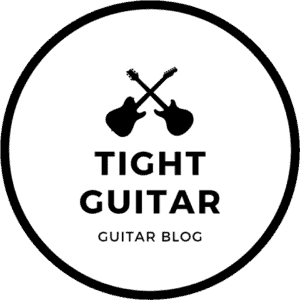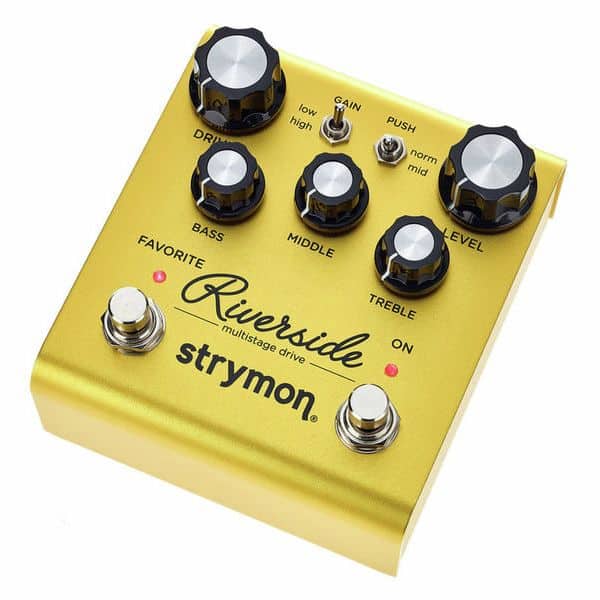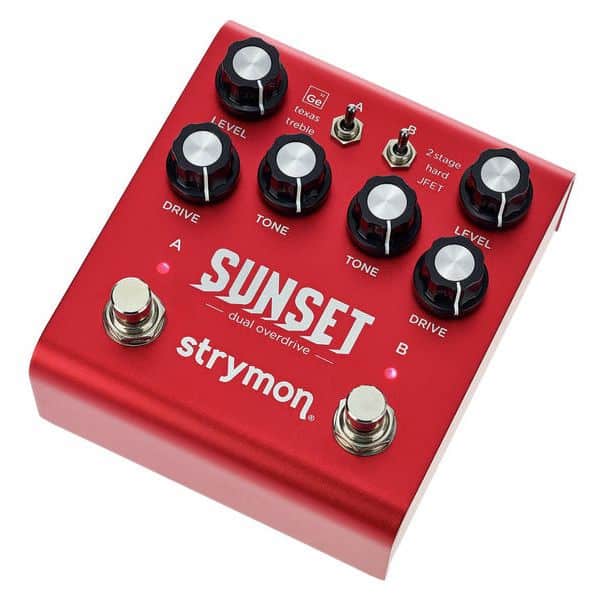
Guitar players love talking about sound. They simply can’t get enough of it, and the consistent stream of new pedals from an endless list of manufacturers doesn’t really help with containing the impulse to buy more and more pedals. So on that note, today’s topic is distortion! How it works, and how to switch fast from clean to distortion.
There are many ways of achieving distortion. The most popular one today is by using distortion pedals, but you can also do that by boosting your preamp gain, using digital amp simulators, or even by overdriving your power amp, as they used to do in the ‘50s and ‘60s.
If you want to bring the best out of your gear, you better understand how it works. This article will help you understand what distortion is, how it works, and the many ways you can operate it.
The distortion changed everything
There is no rock music without distortion. This glorious guitar sound was discovered back in the ‘50s when guitar players were looking for more power. They started cranking up their amplifiers as much as possible and unknowingly clipped their guitar signals creating the first amp distortions.
The distortion sound marks a crucial turning point in music history, and without it, we would have never heard of bands like Led Zeppelin, Black Sabbath, or Metallica. The credit for the first intentional use of distortion goes to Johnny Burnette & the Rock ‘n Roll Trio, but the most impactful performance on the guitarist crowd was probably “Rumble” by Link Wray.
Different types of distortion
Nowadays, there are many types of distortion inducers. Some are “natural” (amplifier distortion), and others are “artificial” (guitar pedals and amp simulators). Each type of distortion sounds different because the clipping process occurs differently in each situation.
None is better than the other. Each type of distortion, amp, pre-amp, pedal, or digital generates a particular color that will fit a certain musical pallet. It all comes down to personal taste and musical preferences.
Non-master-volume amp distortion

The non-master-volume amps (power amps) were the first-ever made guitar amplifiers and the ones you hear in classic rock albums. As their name suggests, these amps have a single volume knob, and they produce distortion only when pushed to their very limit (when cranking up the volume all the way up).
The sound of such distortion is dynamic (less compressed than a high-gain amp distortion), rich in the low and mid-ranges, and will fit a more “old-school” sounding pallet. Many guitar players favor this type of distortion even though it presents a few technical challenges. First, it is highly unlikely you’d be able to crank up your amplifier without rocking the whole building, so it is not really practical for home studios. Second, you are going to put your amp at a blow-up risk!
Preamp distortion
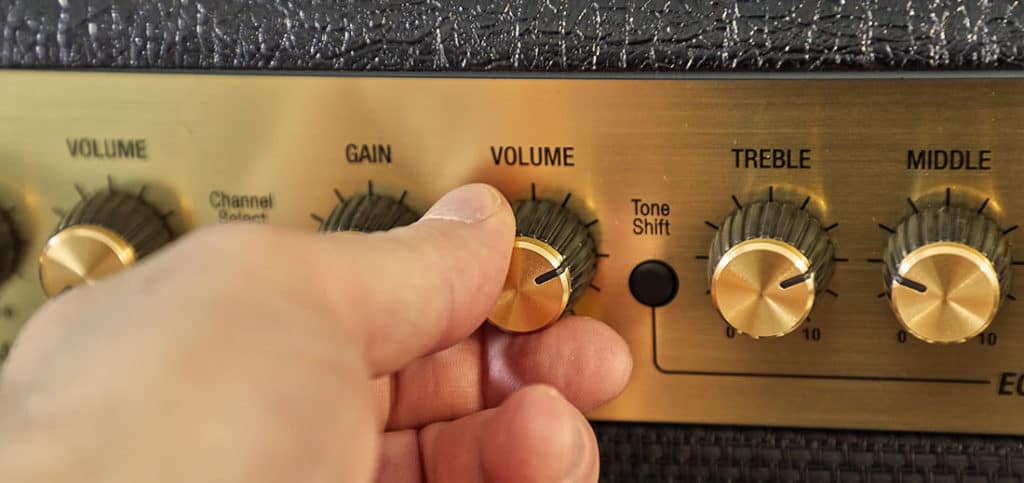
After a few decades of rock’n’roll, the demand for more gain among guitar players only grew stronger. Many guitar giants like Eddie Van Halen, Ritchie Blackmore, and Gary Moore started abandoning their vintage style non-master-volume amps and moved on to master volume higher-gain (preamp) amplifiers.
The preamp distortion is different from a non-master-volume amp distortion because (as its name suggests) the signal clipping occurs at an earlier point of the signal chain. This results in a grittier and more compressed distortion sound that fits the 80s and 90s style rock pallet.
Today, you can also find guitar preamp pedals. They can be very useful for electric guitars as they add an extra sound-designing step to your chain with boost and EQ. They are especially useful for instruments that plug straight into a DI box such as an acoustic guitar or an electric bass.
Distortion Pedals
Distortion pedals work on the same principle as preamps, but because they are aimed to operate with battery voltage, using vacuum tubes in their design might be less practical. So instead, most pedals use solid-state transistors, op-amps, and diodes which emulate the sound of an overdriven signal.
For obvious reasons, a (transistor) distortion pedal will never sound like a vacuum tube distortion (which will never sound like a natural overdriven signal), and the never-ending argument about which of them is “better” is entirely redundant. Pedals have many sound design options and are easier to operate on stage, while amplifier distortions are more dynamic but require pushing an amp to its limit.
Tip for better sound: Try connecting your pedal to the return of the effects loop instead of the amp’s input. This will bypass the amp’s preamp and let the pedal act as the preamp.
It is worth mentioning that there are also vacuum tube distortion/overdrive pedals. These pedals work like a preamp but are packed in a stompbox. Here are a few of my favorite distortion pedals (with and without a tube).
Digital distortion (amp simulator)
The distortion (saturation) process in amp simulators happens digitally. The simulator recognizes the guitar signal and then adds or subtracts harmonies according to the user preference while trying to mimic real amplifiers.
Amp simulators have a bad reputation for sounding lifeless and nothing like the real thing, but they can be very useful depending on how you use them. For example, the Kemper Stage does a fantastic job as a work tool for live shows. It operates with zero humming, has endless sound choices, and is light and easy to carry.
Not to mention that as time goes by, the technology of these products only develops, and it becomes harder and harder to differentiate between an amp simulator and a real one.
7 Ways to Switch from Clean to Distortion
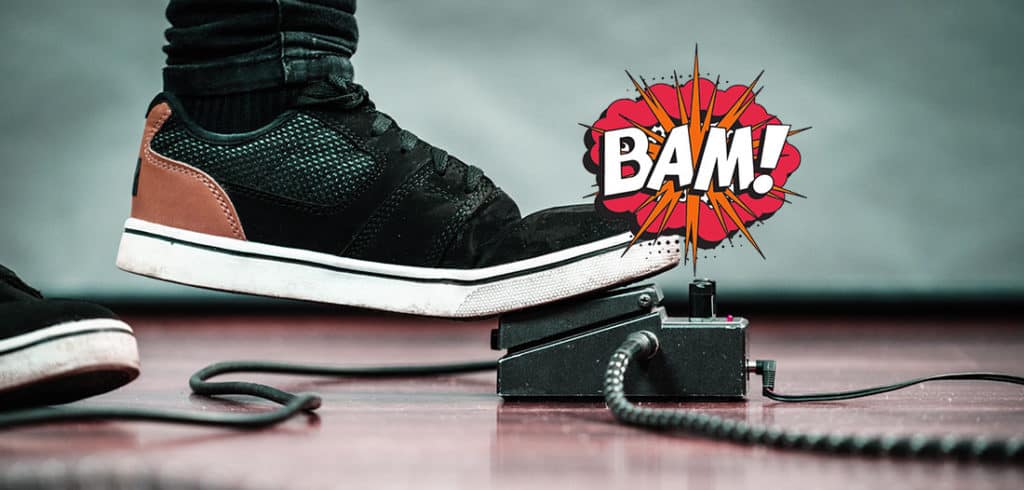
Pedal
Distortion and overdrive pedals are helpful whenever you need to switch rapidly from one sound to another. You will find them useful in rehearsals and onstage when there is simply no time to start turning knobs.
Using distortion and overdrive pedals will provide you with a broad soundscape as these pedals usually come with many sound tweaking options.
Pro tip: Time your leg pressing the pedal with the exact transition moment between different song parts. For example, when transitioning from verse to chorus, press the pedal right at the one count of the chorus, thus generating a strong, accurate, and professional guitar take.
There are many great-sounding distortion and overdrive pedals out there. We’ve already covered a few of my favorite distortion pedals earlier, so here are a few of my favorite overdrive pedals:
Footswitch
Some amplifiers come with a footswitch input which allows you to connect a footswitch and shift between the amp channels. In some cases, the footswitch is sold separately but is relatively cheap.
The footswitch is useful mainly at home and in the studio, less in rehearsals or on stage because you don’t always carry your amplifier to every venue.
AB or ABY selector pedal
The ABY pedal is simplistic but very useful. Its primary function is taking your signal and splitting it into two identical signals. The AB selector allows you to switch between these two channels, while the ABY features a third option of playing both signals simultaneously.
With the AB and ABY pedals, you can send your signal to two different amps, one tuned to a clean sound, one for distortion, and then switch rapidly between them. The added feature of the ABY selector allows you to play both channels simultaneously (stacking a clean signal on top of a distorted one will result in a rich and definitive sound).
There are many more creative uses for this pedal. For example, you can separate your tuner from the rest of your rig (for true bypass) or connect two guitars into one amplifier (or a looper).
Pedal Switchers
Switching from clean to overdrive or distortion is pretty simple. All you need to do is to hit a footswitch or a pedal, and that’s it, but what happens when you need to switch from clean to a stack of more than one pedal?
When designing our drive or distortion sounds, we can stack more than one pedal (for example, two overdrive pedals and a booster). The fastest way to switch between these two setups without performing some intricate pedalboard dance is to use a pedal switcher.
A pedal switcher lets you connect many pedals into one hub and program different pedal combinations into a single switch. This way, you can transition fast from any intricate sound to another.
The guitar volume knob
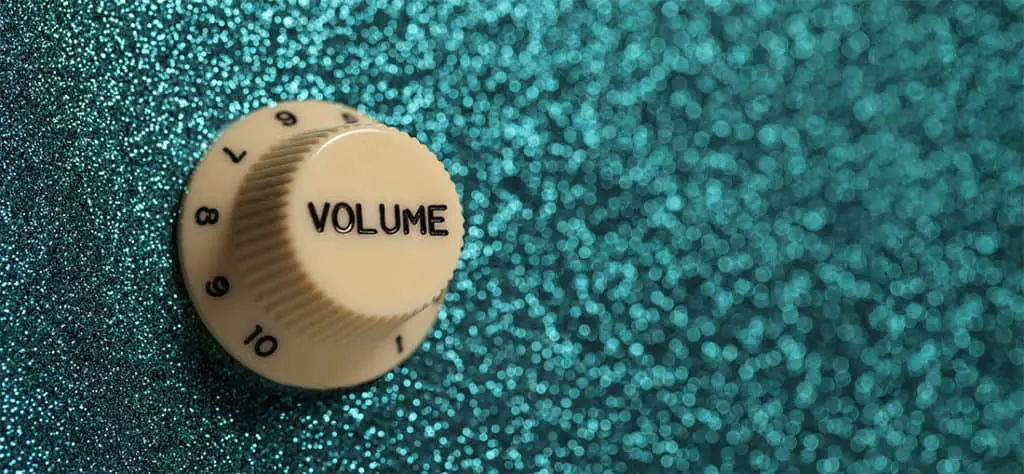
It may surprise you, but before the invention of the preamp and later on the overdrive and distortion pedals, guitar players could still produce a distorted sound and maintain the option of switching fast from clean to drive. So how did they do it? With the guitar volume knob, of course!
Back in the days when vintage non-master-volume amps ruled the market, a guitar player could achieve distortion sound only by cranking up the amp to its limit and literally “over-driving” it. In this kind of setup, the guitar volume knob attenuates or pushes your tone – when tuned low, you get a clean sound, and when pushed up, you get a massive distorted sound.
Pickup selector

The location of the pickups on our electric guitars affects their behavior. The pickups closer to the fretboard will sound smoother, rounder, and softer, while pickups that are located closer to the bridge will sound punchier, grittier, and sharper.
Changing pickup modes is, of course, not a complete transition from clean to drive but an extra step towards it. In fact, many guitar players use their bridge pickup for soloing and the neck pickup for more rhythmic parts.
Dynamics
Playing dynamics, or in other words, how hard you hit the strings, will also affect how driven your signal is going to be. The harder you hit, the stronger the signal, and therefore, it is more likely to get clipped (distorted).
How rockstars switch from clean to distortion

Do you think that every time James Hetfield needs to switch to overdrive or distortion, he runs to his pedalboard? No way. The stage is so big, and he could literally be hundreds of yards away. So how the hell do these rockstars switch sounds so smoothly in the middle of a song?
The answer is simple – stage workers. World-renowned bands and artists are supported by big production companies that provide them with a team of sound engineers. The back-line team is there to make sure that everything runs like clockwork. They will tackle any issue that may arise during a show and help the band with the general operation of technical stuff (like pressing pedals, replacing guitars, etc).
A logical and comfortable clean to distortion setup

It took me years to understand how to line up my drive pedals and get the maximum out of my pedalboard. So today, we will learn how to set up drive pedals in a comfortable, step-like system that fits the musical progress of a song.
The first rule in setting up drive pedals is to stack them instead of tweaking them to work individually. We do that for a couple of reasons. First, when stacking pedals, we will have to press only one switch (instead of two) when transitioning between overdrive and distortion. Second, we want to utilize the electrical circuits of multiple pedals to get a richer tone with more flexible tweaking options.
For this clean-drive-distortion setup, you’ll need two overdrive pedals, a distortion pedal, and a booster (in a separate pedal or as an added function to your distortion). I usually set my first overdrive pedal to be quite gentle, the second one with a little more grit, and the distortion that comes after them is also relatively soft. The booster location in the chain is after these three pedals.
We get five drive-steps with this setup: clean, crunch, double-drive (good for classic rock), full-on distortion, and a soloing mode. You can also leave out one overdrive for a different type of distortion and get a sixth drive sound.
Author’s note: As a long-time session guitarist with a lot of stage experience, I can safely say that the drive section of your pedalboard is the most important part of your sound. This pedalboard setup fits many popular genres and is highly versatile because it provides you with so many options.
- Common question: Should a distortion/overdrive pedal be louder than the clean sound or should they both be tuned to the same volume?
- Answer: Overdrive and distortion pedals should be treated as “steps”, meaning that every pedal we add to our chain should increase our overall volume by just a little. We do that so we could match our energy with the gradual growth in a song’s energy.
How to play clean WITH distortion
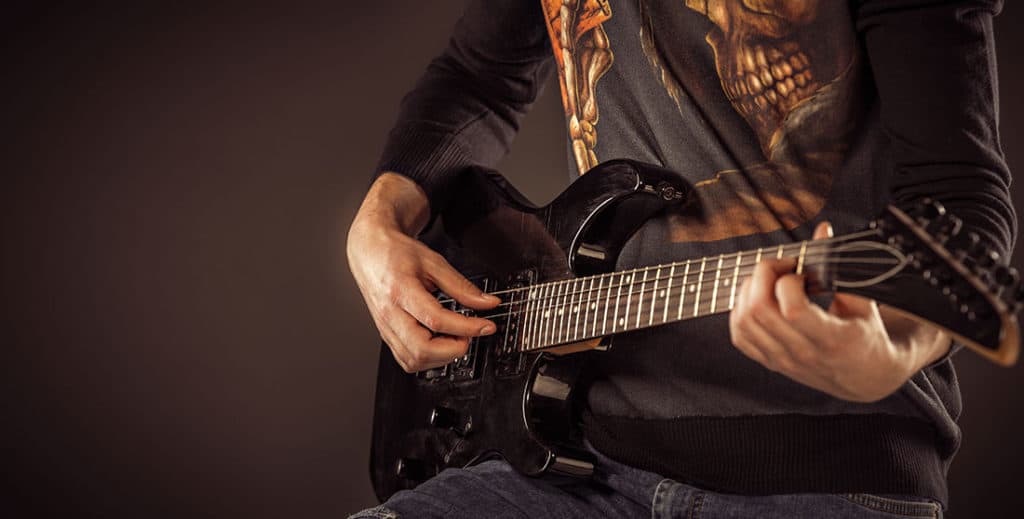
Many beginners struggle when playing with distortion. It’s highly sensitive to every little touch of a finger, open strings ring out loud when you hit them by mistake, and transitioning between chords can generate an unpleasant screeching noise.
Don’t worry. There is plenty you can do to prevent this unnecessary noise and improve your distortion play.
